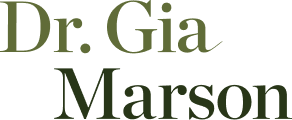Did you hear the recent announcement that Weight Watchers will be offering free services to teens (ages 13-17) starting this summer? They have cloaked the program in a language of wellness, calling it a way to guide healthy behaviors. (1) The primary problem is they are a for profit company trying to sell their product … and their product is weight loss, otherwise known as dieting. At weekly meetings and check-ins, Weight Watchers does not check glucose levels, blood pressure, vitamin deficiency or other health markers. They check, track, validate, and celebrate weight loss.
This move has struck a chord with the National Eating Disorder Association and with medical/psychological/dietetic professionals in the world of eating disorders who recognize it as potentially getting teens hooked on dieting, body shaming, internalized self-criticism, calorie counting and scales during critical years of self-development. Even after the immediate outpouring of concern, Weight Watchers maintained their position with a tweet saying “they take their responsibility seriously” and that the program “is not a diet.” (2)
Here are some keys points that make it risky to for a weight loss company to manage body image, health, and weight during adolescence and why those of us in the field of eating disorders are critical of this announcement:
- There is pervasive evidence that diets don’t work. How is a diet different from the Weight Watchers program’s guided healthy eating plan?
- Research shows a long-term relationship between childhood social status and weight. (3) Will Weight Watchers address the reality that lower consumption of healthier foods is often rooted in community access and that health education alone has not been shown to make a significant difference? (6)
- Teens who starve themselves and engage in negative health behaviors will be rewarded for meeting weight loss goals. This reinforces size over health.
- Teens who eat balanced meals, snacks, and are active without being obsessive and stay weight neutral or gain weight may experience shame and become more internally self-critical for not meeting the weight loss goals. There is a risk of teaching teens that, with enough effort, their bodies can be molded to meet a cultural ideals, even if it interferes in pubertal or other developmental progression.
- Eating disorders can develop at any size — across the weight continuum. It is a myth that eating disorders can be identified by an underweight appearance or number on a scale. How will employees spot the onset of an eating disorder in such a young, vulnerable population before it becomes entrenched if a weight is above a goal target?
- Many eating disorder behaviors (purging, over-exercising, laxative abuse, skipping meals) are done secretly. Without advanced, specialized training, these dangerous behaviors are difficult to detect. Parents and a team of professionals can best monitor concerns. What professionals will be on the team with Weight Watchers once parents sign a consent to the program?
- It is normal and healthy for adolescents to gain significant amounts of weight as they complete puberty and for girls to gain more body fat. Will each adolescent’s unique growth curve and pubertal progression be assessed and considered along with a pediatrician or adolescent medicine doctor when weight loss goals are identified and monitored?
- The science reveals that higher levels of difficulty coping with weight stigma predict poorer psychological well being. That is, an internalized view of weight stigma is related to greater amounts of depression, anxiety and overall stress. (4) The Weight Watchers program promotes weight loss and thus, weight stigma. What parameters will be used to notice teens who show signs of internalized weight stigma and mental health problems?
Statistics show that eating disorders often have a first onset during adolescence or even prior; the median ages for onset of eating disorders was about 12- to 13-years-old in a review of studies. Furthermore, eating disorders among adolescents are often associated with functional impairment and suicidality. Two types of eating disorders are even related to suicide plans and two others to suicide attempts. (5) Weight Watchers employees will have the responsibility to handle these complex scientific, medical and psychological issues when it comes to counseling teens during the critical years of identity development in adolescence. Many of us who specialize in helping people with eating disorders recover are very concerned. The Weight Watchers Program for teens is extremely risky because eating disorders have the highest mortality rate of all mental illnesses and they usually start with a diet. It is irresponsible to place teens — some of whom may be at great risk for developing eating disorders — in the hands of non-professionals employed by a for profit company whose mission is to promote weight loss. Furthermore, health and health behaviors cannot be measured simply with a scale.
Sources:
(1) Weiss, S (2018). Teen Vogue Online. February 12.
(2) Weight Watchers, (2018). Twitter, February 10 @ 3:46 pm.
(3) Hardy, R. and Wadsworth, M. (2000).The influence of childhood weight and socioeconomic status on change in adult body mass index in a British national birth cohort. International Journal of Obesity Related Metabolic Disorders; Jun;24(6):725-34.
(4) Hayward, L et al. (2018). Weight Stigma Predicts Poorer Psychological Well-Being Through Internalized Weight Bias and Maladaptive Coping Responses. Obesity.
(5) Swanson, SA et al. (2011). Prevalence and correlates of eating disorders in adolescents. Results from the national comorbidity survey replication adolescent supplement. Archives of General Psychiatry. Epub Jul;68(7):714-23. doi: 10.1001/archgenpsychiatry
(6) Azétsop, J.and Joy, T. 2 2013). Access to nutritious food, socioeconomic individualism and public health ethics in the USA: a common good approach. Philos Ethics Humanit Med. Oct 29. doi: 10.1186/1747-5341-8-16
All Blogs


